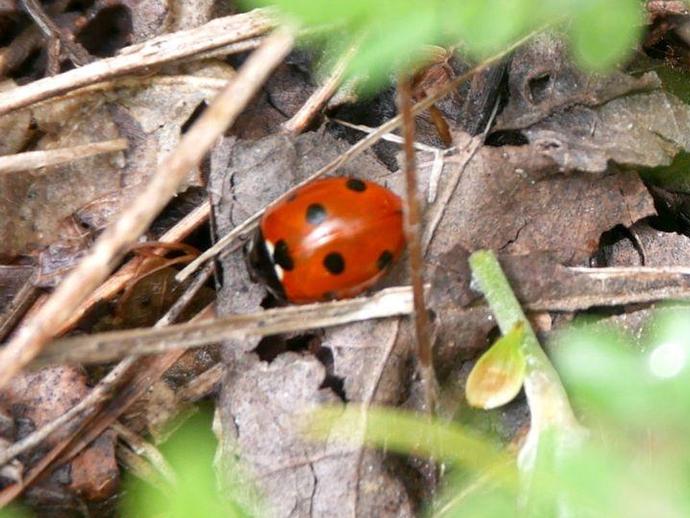August 8, 2021
We're reaching into the archives for today's #BenInNature update presented by our friends at Carter Bank & Trust! The following post was originally published on July 20, 2020.
Coccinella septempunctata, the seven-spotted ladybug, is Europe's most common ladybug, but you might be able to find it in your own backyard here in southwest Virginia.
These ladybugs were intentionally introduced into North America multiple times between 1956 and 1971 to serve as a biological control of aphids. All of those attempts apparently failed. However, in 1973, a population of seven-spotted ladybugs was discovered in New Jersey. These ladybugs had apparently been accidentally introduced instead of intentionally introduced, and for whatever reason, they finally took hold. They can now be found throughout North America!
Of course, invasive species are never a good thing, even if they do eat aphids in your garden. As of now, the most common ladybugs in North America are invasive species. The ladybug spotted (no pun intended) most frequently is Harmonia axyridis, the multicolored Asian ladybug -- these are the guys that like to invade your house in massive numbers in the fall. Meanwhile, native ladybug species that were once incredibly common as little as 20 years ago have become rare, such as the nine-spotted ladybug (Coccinella novemnotata) or the two-spotted ladybug (Adalia bipunctata).
If you'd like to learn more about native and invasive ladybug species -- and what you can do to help native species -- check out the website for The Lost Ladybug Project, located at www.lostladybug.org. It features some great resources and identification guides!
ABOUT #BenInNature
Social distancing can be difficult, but it presents a great opportunity to become reacquainted with nature. In this series of posts, Administrator of Science Ben Williams ventures outdoors to record a snapshot of the unique sights that can be found in the natural world. New updates are posted Monday - Friday, with previous posts highlighted on the weekends. This series of posts is made possible thanks to the support of VMNH Corporate Partner Carter Bank & Trust (www.cbtcares.com).
NATURE PHOTO IDENTIFICATIONS
If you discover something in nature that you would like help identifying, be sure to message us right here on Facebook with a picture (please include location and date of picture) and we'll have our experts help you identify it!

 Hours & Admissions
Hours & Admissions Directions
Directions

